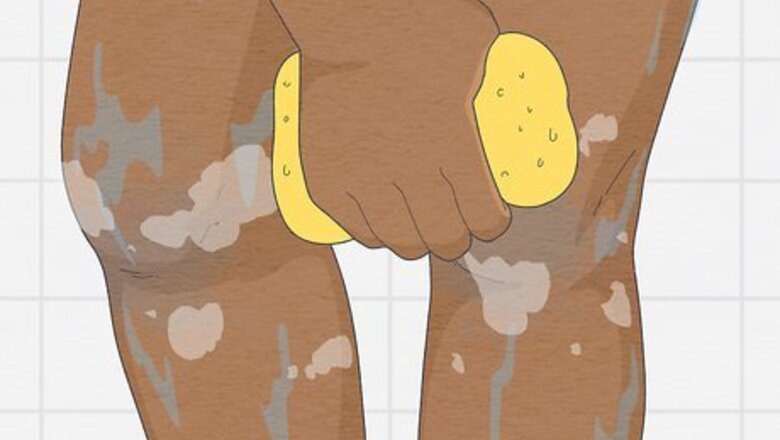
views
Dark spots on/around your knees are totally normal, and lots of people have darker areas of skin throughout their bodies. However, if you really want to get rid of this hyperpigmentation, you’ve come to the right place. In this article, we’ll give you plenty of expert-approved home remedies and preventative steps to help reduce the dryness and darkness in your knees. Keep reading to brighten up your kneecaps and spirits!
- Scrub your knees with sugar and olive oil to exfoliate and lighten them. Lemon juice and baking soda work too.
- Exfoliate regularly to help reduce dryness and nourish your skin.
- Apply lotion to your knees twice daily to trap in moisture.
Moisturizing and Exfoliating at Home
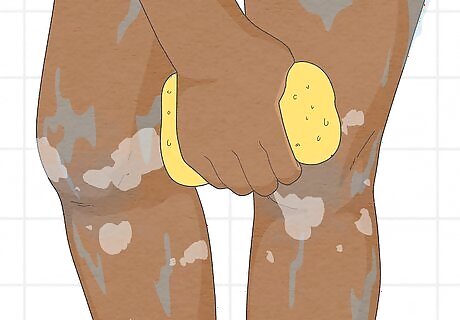
Exfoliate your knees with a loofah or sponge in the shower regularly. Oftentimes, dark knees are caused by psoriasis and other dry-skin conditions. After washing your body with soap, use a loofah or hard sponge (or even a pumice stone) to exfoliate the dead and flaky skin cells that are making your knees ashy. Scrub each knee for about 30 seconds, then rinse. Repeat this process every time you shower. Even if you don’t have dark knees, make exfoliating regularly a habit. Exfoliation detoxifies your skin, stimulates your nervous system, and leaves your skin glowing (whether it’s prone to dryness or not).
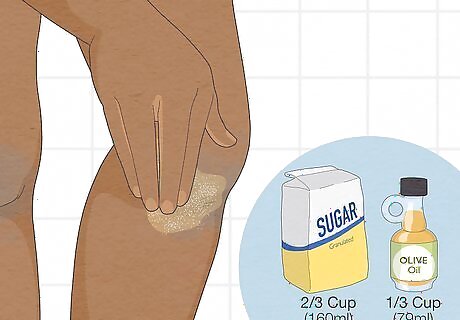
Make a sugar and olive oil scrub to exfoliate your knees as needed. Pour ⁄3 cup (79 ml) of olive oil and ⁄3 cup (160 ml) of white sugar into a bowl and stir well. Then, use your hands to rub the mixture into your knees. After rubbing for about 30 seconds, let the scrub sit on your knees for 5 minutes before rinsing it off with water. Using this exfoliating mixture on your skin helps remove dead skin cells, which can make the skin appear lighter and brighter. Apply this scrub whenever your skin gets particularly dry or flaky, but try not to use it more than once a week.
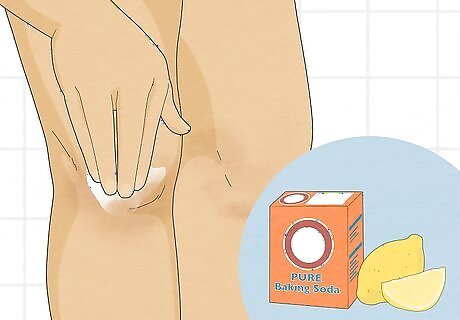
Mix baking soda and lemon juice to make a natural lightening paste. Add equal parts baking soda and lemon juice to a small bowl, and stir them until a paste forms. Use your hands to rub the paste into your knees for about 1 minute, and then rinse with water. Apply this paste once or twice weekly. Both baking soda and lemon juice work well as natural lightening agents for many people, and the grittiness of the baking soda helps to exfoliate your skin.
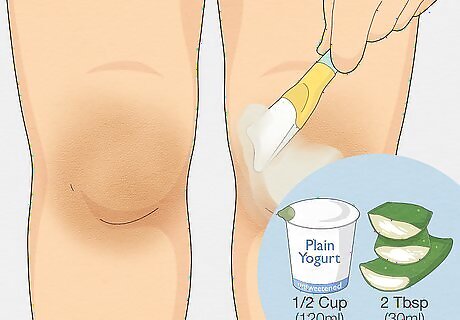
Apply an aloe vera mask 2-3 times a week if you have sun damage. Aloe has been proven to combat hyperpigmentation caused by the sun’s rays. Mix ⁄2 cup (120 mL) of plain yogurt with 2 tablespoons (30 mL) of freshly extracted aloe gel in a bowl and stir well. Use a spatula to apply the mask to your knees, and let it sit for 15-30 minutes. Then, rinse your knees with water. Aloe has also been proven to heal wounds, scars, and other forms of inflammation that may be causing your knees to become dark or reddened. To extract aloe gel from the leaves of an aloe plant, simply cut the leaf off of the plant and slice down the center. Then, use a spoon to scoop the gel out of the leaf. If you don’t have fresh aloe gel available, you can purchase pure aloe from most pharmacies or supermarkets.
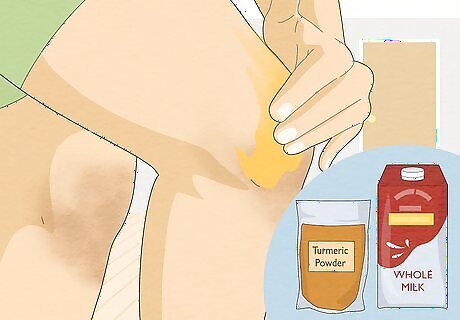
Rub a turmeric-milk paste on your darkened knees. Combine enough milk and turmeric powder together to create enough paste to cover your knees. Apply the turmeric paste to your knees, let it sit for a couple of minutes, and rinse it off completely. Research points to curcumin (an ingredient in turmeric) being a potential treatment for hyperpigmentation.
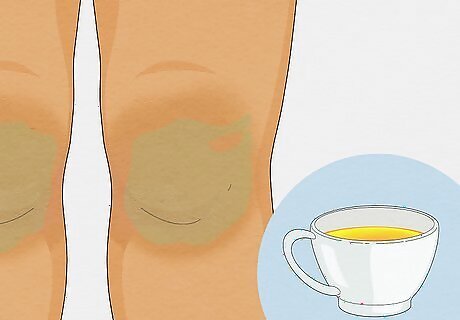
Apply green tea to your knees each day. Brew a mug of green tea in a mug of comfortably warm water. Then, rub a little bit of the tea over your darkened skin. Feel free to apply this home remedy a handful of times during the day, if you'd like. Some studies indicate that green tea extracts could have skin-lightening effects, but more research is required.
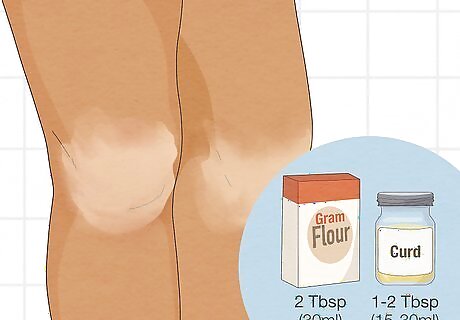
Massage a gram flour and curd blend into your knees weekly. Curd and gram flour masks have also been proven to lighten and fight hyperpigmentation on various parts of your skin. Mix 2 tablespoons (30 mL) of gram flour with 1–2 tablespoons (15–30 mL) of curd into a small bowl and stir well. Once the mixture is pasty, apply it to your knees for about 15 minutes. Then, rinse it off with water. For an extra lightening effect (not to mention a more appealing scent), add a pinch of turmeric to your paste.
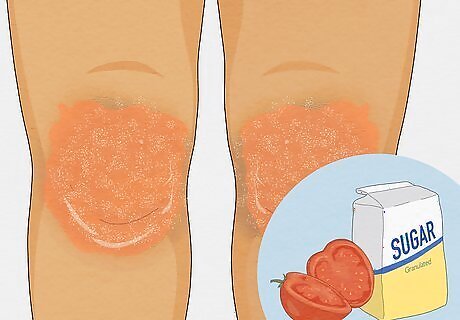
Apply a tomato and sugar mask to your dark knees once a week. Tomatoes contain lycopene, an antioxidant that can fight inflammation and reduce redness in your skin. Grate a medium-sized tomato using a grater and collect the juice into a small bowl. Then, pour in about 2–4 tablespoons (30–59 mL) of white sugar and mix well. Massage the mask into your knees and let it sit for about 3 minutes before rinsing it off with water.
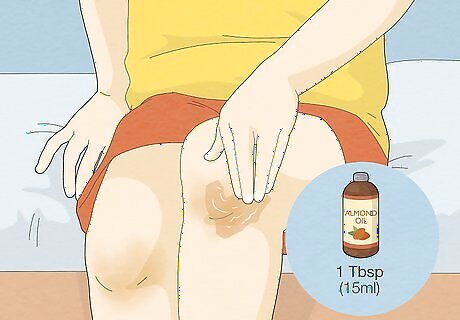
Rub almond oil on your knees once per night. Every night, apply 1 tablespoon (15 mL) of almond oil to your knees. Once you’ve fully coated your kneecaps with the oil, cover them with a strip of fabric or a towel overnight. While almond oil is a natural lightener, it will also add moisture to your skin, which helps to reduce hyperpigmentation.
Applying Creams and Lotions
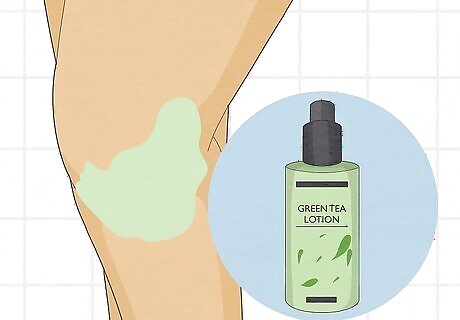
Rub a green tea moisturizer into your skin daily. The antioxidants in green tea extract can help treat dry skin naturally. Massage a green tea lotion or cream into your knees, elbows, and other dry areas of your body once every morning or evening. You can also create your own green tea moisturizing paste by mixing 2 tablespoons (30 mL) of loose green tea leaves with 1 cup (240 ml) of coconut oil into a bowl and whipping them together for 3-5 minutes.
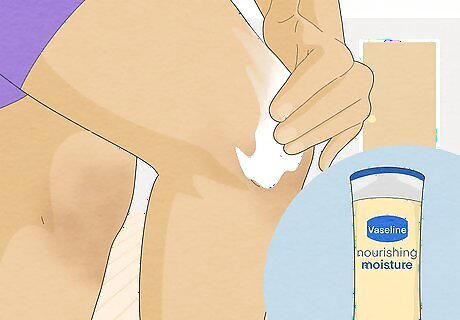
Use lotion on your knees every day to reduce dryness. Apply a moisturizing lotion to your knees every morning and evening. Look for lotions that contain petrolatum as an ingredient, which forms a protective barrier on the skin to trap moisture inside your cells. Avoid using lotions with comedogenic ingredients like shea butter, jojoba, and lauric acid since they can clog your pores and cause you to break out.
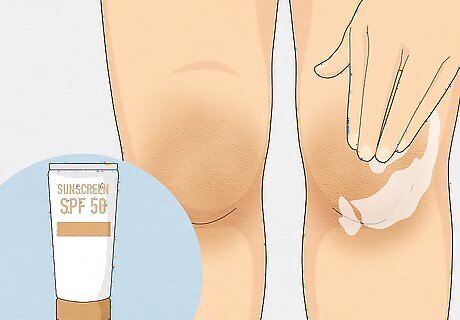
Wear sunscreen every day to prevent sun damage. If you have a dark skin tone, you may be more susceptible to skin damage and scarring on your knees. Before you go out in the sun, apply sunscreen with an SPF of 50 or higher (especially around your knees) to help fight against UV radiation. In some cases, wearing sunscreen regularly can even remove dark spots entirely!
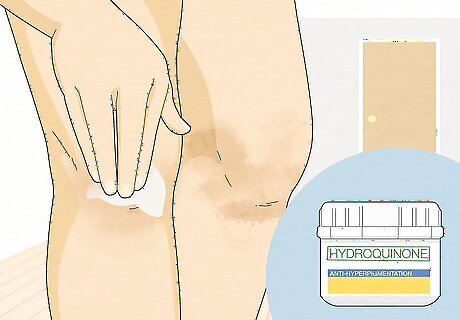
Apply a hydroquinone cream or gel for about a month. Hydroquinone is one of the most powerful depigmenting and lightening agents out there. If you have permanent dark spots, look for a whitening cream that contains hydroquinone as an ingredient. Rub this cream on your knees every day for 4-6 weeks for the best results. For people with sensitive skin, hydroquinone can cause inflammation. If you feel a burning or tingling sensation when you apply the cream, rinse your knees with cold water immediately. Avoid using lightening creams for longer than 6 weeks. They can cause skin irritation and damage to the outer layer of the skin. Long-term use of whitening creams has also been linked to certain types of cancer. Always use these hydroquinone creams under the direction of a dermatologist. Look for other depigmenting chemicals in your creams like kojic acid, alpha-arbutin, and niacinamide, too. You can also look for paper mulberry and licorice extract if you prefer more natural ingredients.
Addressing Underlying Issues
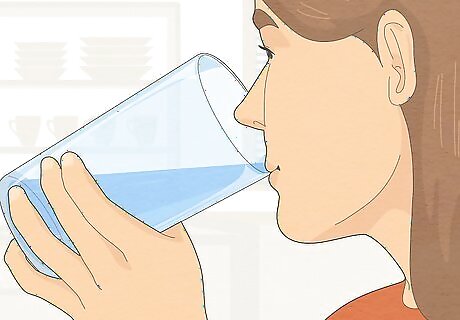
Increase your water intake to improve hydration. If you suspect that your dark knees are caused by dry skin, drink more water! In general, aim to consume at least 68 fluid ounces (2.0 L) of water every day. Staying hydrated will help keep your knees (and skin in general) glowing and healthy. If you don’t see results from increasing your water intake, start applying a moisturizer too.
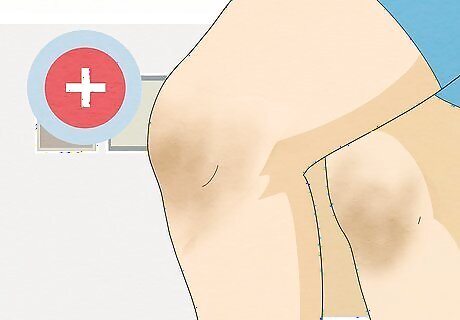
Visit a dermatologist to diagnose pigmentation issues or skin diseases. Home remedies can lighten your skin, but their success isn’t guaranteed. When in doubt, make an appointment with a dermatologist. The doctor will be able to do tests and look at your knees to identify likely diagnoses for your hyperpigmentation. They’ll also be able to offer more effective treatments for lightening the skin. If you’re having trouble finding a dermatologist, search the American Board of Dermatology’s database for a doctor who specializes in hyperpigmentation. You can also ask your GP if they can refer you to anyone. (If they can, your insurance will likely cover it!) Explain which methods you’ve used to try to get rid of your dark knees in as much detail as possible. The more your dermatologist understands your body’s history, the more equipped they are to find the cause of the problem.
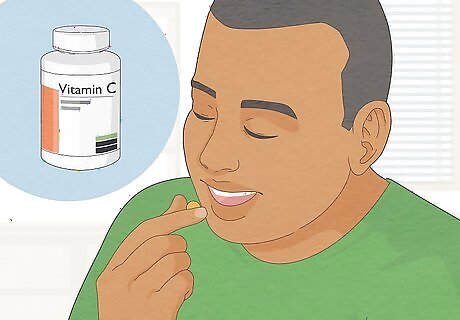
Increase your vitamin C intake for lighter, healthier skin. Vitamin C contains antioxidants that have been proven to combat the effects of aging, UV rays, wrinkles, hyperpigmentation, and color loss in various parts of the body (including the knees and elbows). Try to consume at least 2-3 vitamin C-rich fruits and vegetables (tomatoes, oranges, kiwi, broccoli, strawberries) a day for healthier and more glowing skin. Some people recommend applying a vitamin C serum to help reduce hyperpigmentation around the knees and elbows. However, more research is needed on how truly effective these serums are.
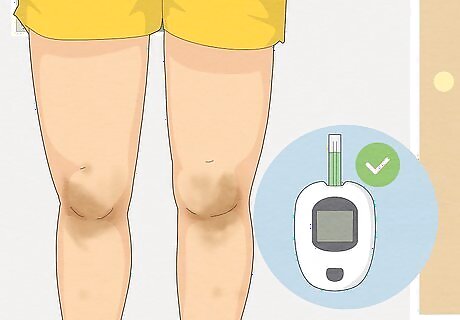
Get tested for diabetes if you have permanent dark spots on your knees. Sometimes, individuals with undiagnosed or untreated diabetes will develop dark spots on their knees and shins. If you have spots that won’t go away, visit your doctor to get tested for diabetes symptoms. This condition is called “diabetic dermopathy,” and people often mistake these marks for age spots.




















Comments
0 comment